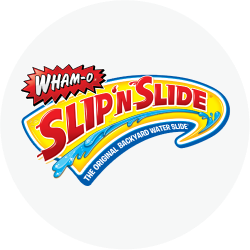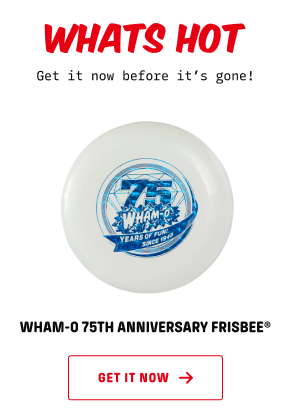
In the wild and wondrous world of WHAM-O, where toys were dubbed “Super Sneaky,” “Super Elastic,” or just plain “Super,” one toy reigned supreme: the SuperBall. Born in a lab, perfected in a toy factory, and bounced off walls, ceilings, sidewalks—and even hotel hallways—the SuperBall wasn’t just another gimmicky plaything. It was a physics-defying, rooftop-clearing, table-trick-performing orb of pure bounce that became a cultural phenomenon.
It all began in 1964, not at WHAM-O, but in the lab of an oil company chemist named Norm Stingley. Playing with synthetic rubber known as polybutadiene, Stingley stumbled upon a strange material that was unnaturally bouncy. He brought his discovery to WHAM-O, where co-founder Spud Melin was intrigued—but not quite convinced—until he saw the “Table Trick.” With its incredibly high coefficient of friction, the ball could reverse spin and bounce back in the direction it came. Spud was sold. The age of the SuperBall had begun.

ABOVE: The Firetron from 1970 gave the SuperBall a fluo- rescent upgrade, and 1976’s SuperBall with “Bionic” bounce was meant to capitalize on The Six Million Dollar Man TV show. The bounce came back in 1998, when WHAM-O reintroduced the “Original SuperBall.” In 2002, Zectron took center stage once again and finally, in 2008, “the ball with the Incredible Super High Bounce” celebrated WHAM-O’s 60th Anniversary.
But making it wasn’t easy. Early versions shattered under pressure. “Back to the drawing board, Norm!” Spud reportedly said, and back Norm went. He added vulcanizing agents and experimented with heat, time, and pressure—eventually perfecting a process that required molding the material at 320°F and 1,000 pounds per square inch. The final product? A two-inch ball made of “Zectron,” a trademarked WHAM-O name that sounded like something out of a sci-fi movie and bounced like nothing the world had seen before.

Released in 1965, the SuperBall was an instant hit. Life magazine reported on it. Kids bounced them over houses. Adults sneakily dribbled them at work. WHAM-O claimed they had 92% resiliency—meaning a drop from any height would bounce back 92% of the way. They sold six million in that first year alone.
The SuperBall was more than fun—it was legendary. One promotional version made from a bowling-ball mold broke through a hotel wall. In another (perhaps apocryphal) tale, a giant SuperBall was dropped from a 23rd-floor window and bounced back fifteen stories. Whether myth or fact, the stories only amplified the SuperBall’s mystique.
Soon, WHAM-O was rolling out variations: Mini SuperBalls, SuperBall Golf, SuperBall Baseball, and even SuperBall Dice. But imitators came fast and cheap—quarter-machine knockoffs and wannabe bouncers that flooded the market. WHAM-O fought back, threatening to enforce Norm’s patent with full legal force, but the damage was done. By 1977, with sales dipping, SuperBall was pulled from WHAM-O’s lineup.
Still, the bounce was far from gone. SuperBall resurfaced in 1998, celebrated WHAM-O’s 60th anniversary in 2008, and remains a nostalgic favorite for generations who remember the sheer joy of seeing that little orb leap impossibly into the sky.
Among all the “Super” things WHAM-O ever dreamed up—Super Stuff, Super Looper, Super Foam, even SuperElasticBubblePlastic—it was SuperBall that truly lived up to its name. It didn’t just bounce. It soared.

















